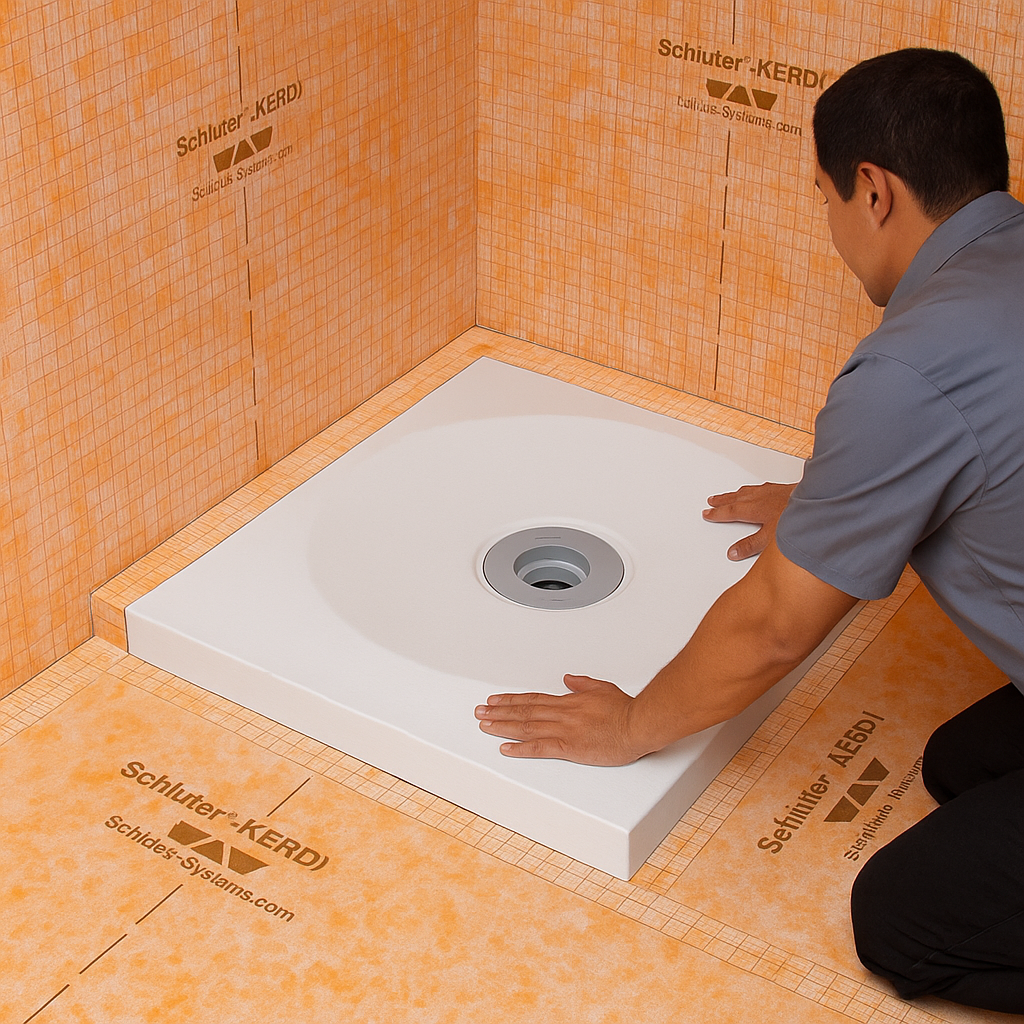🚿 Introduction: The Shower Pan Showdown
When remodeling a bathroom, your shower pan is one of the most critical components—yet it’s often overlooked. It forms the base of your shower, directs water to the drain, and protects your subfloor from water damage. Choosing the right system could be the difference between a waterproof dream or a moldy nightmare.
In this post, we’ll compare the Schluter vs traditional shower pan systems, weighing their pros and cons to help you make the best decision for your next remodel or installation project.
🧱 What Is a Traditional Shower Pan?
The traditional method of building a shower base involves multiple layers of sloped mortar, a PVC or CPE liner, and cement backer board walls. The liner is sandwiched between mortar layers and slopes toward the drain to direct water out of the system.
While this technique has been used for decades, it’s labor-intensive and requires expert sloping and waterproofing skills. If done incorrectly, water can seep past tile grout or thinset and saturate the mortar bed, leading to long-term mold issues and eventual failure.
🧰 What Is a Schluter Shower Pan System?
The Schluter Shower System modernizes the approach by using a prefabricated foam tray (KERDI-SHOWER-T) that’s already sloped to drain, paired with a surface-applied waterproof membrane (KERDI). It integrates seamlessly with the KERDI-DRAIN, forming a continuous waterproof barrier directly under the tile.
This design prevents water from ever reaching the subfloor or bedding material. It's faster to install, more predictable, and significantly reduces the risk of leaks or water buildup—making it the preferred choice for many contractors and DIYers alike.
📊 Schluter vs Traditional Shower Pan: Key Differences
Here’s a side-by-side look at how each system stacks up:
📥 Download this comparison chart as a PDF
💰 Cost Breakdown: Upfront vs Long-Term Investment
At first glance, traditional shower pans may appear cheaper. Mortar, liners, and cement board are all relatively inexpensive. However, traditional builds often require specialized labor, longer installation timelines, and a higher risk of failure if waterproofing isn’t done perfectly.
In contrast, the Schluter system has higher material costs up front, but saves money in:
-
Faster installation (reducing labor hours)
-
Fewer callbacks and repairs
-
Lower mold risk
-
Manufacturer-backed warranty
Over time, the Schluter system often proves to be more cost-effective, especially when factoring in peace of mind and water damage prevention.
🛠️ Which One Should You Choose?
Choose Schluter if:
-
You want speed, reliability, and modern waterproofing
-
You're planning a curbless or walk-in shower
-
You're a DIYer looking for a kit-friendly solution
-
You want a long-lasting, low-maintenance result
Choose Traditional if:
-
You have advanced skills or a trusted tile pro
-
You’re on a very tight budget
-
Your shower shape is custom or irregular
When comparing Schluter vs traditional shower pan setups, the decision comes down to long-term reliability versus upfront simplicity. For most homeowners and contractors, Schluter is the better choice for consistent, code-compliant, and waterproof shower performance.
✅ Conclusion: Build Your Shower on a Solid Foundation
If you're investing in a remodel, your shower should last for years without leaks, mold, or repair bills. That’s why more professionals are recommending the Schluter system—it combines modern engineering with faster, foolproof installation.
👉 Need help choosing the right shower pan system?
📩 Download our Free Schluter Planning Kit or Contact Us for a Consultation and let’s build your bathroom right—from the ground up.

